Yes. That’s exactly how we imagine it being to be used. 
Even more: the TIG (or TTIG?) allows for configuring multiple WiFi access points. No need to wipe anything if you still need it at some later time, just configure up to 8 access points. (And be sure not to use Firefox for that until a bug is fixed.)
Being Australia based as well, I grabbed a US915 TIG at the conference, hoping that it could download the AU915 or AS923 channel plans. Especially as the TIG says that it supports a configuration and update server (CUPS but not for printers!).
So tried it (very briefly) on US915 and it correctly joined and transmitted packets. On AU915 and AS923 it would not join (which makes sense as the channel plan was still US915).
But now the documentation is clear so it looks like waiting a month and a half should do the trick:
Q. I don’t live in Europe or in the US, can I still use the gateway?
Currently, the gateway only supports the EU868 and US915 frequency plans. Near the end of Q1, all frequency plans will be supported.
Thanks to all involved – it looks like a really good development device which just needs a bit of time to venture outside the EU and US.
Hi all
We are working on getting the product page live with RS components (it is still in draft as you can see). Once it is finalized, it will be communicated to you guys. Please refrain from spreading false news and rumours based on the draft page.
Thanks.
In the mean time some statistics:
Number of TIGs registered (and public): 343
curl -s http://noc.thethingsnetwork.org:8085/api/v2/gateways | jq -c -r '.statuses | to_entries[] | select(.key | contains("eui-58a0cbfffe80")) | [.key, .value.frequency_plan, .value.location.latitude, .value.location.longitude, .value.uplink, .value.downlink] |@csv ' | nl
Number of uplinks delivered via TIGs: 2’780’900
curl -s http://noc.thethingsnetwork.org:8085/api/v2/gateways | jq -c -r '.statuses | to_entries[] | select(.key | contains("eui-58a0cbfffe80")) | [.value.uplink] |@csv ' | tr -d '"' | grep . | paste -s -d+ | bc
Number of downlinks routed via TIGs: 77’247
curl -s http://noc.thethingsnetwork.org:8085/api/v2/gateways | jq -c -r '.statuses | to_entries[] | select(.key | contains("eui-58a0cbfffe80")) | [.value.downlink] |@csv ' | tr -d '"' | grep . | paste -s -d+ | bc
Busiest TIGs by uplink:
eui-58a0cbfffe8005b2 141624
eui-58a0cbfffe8004f5 111592 47
eui-58a0cbfffe80048c 107898
eui-58a0cbfffe8004b8 104489 497
eui-58a0cbfffe80050a 103199 1685
curl -s http://noc.thethingsnetwork.org:8085/api/v2/gateways | jq -c -r '.statuses | to_entries[] | select(.key | contains("eui-58a0cbfffe80")) | [.key, .value.uplink, .value.downlink] | @csv ' | tr -d '"' | tr , ' ' | sort -nr -k2 | head -n 5
Busiest TIGs by downlink:
eui-58a0cbfffe800359 38865 21484
eui-58a0cbfffe8006b5 15825 4990
eui-58a0cbfffe800627 13600 3873
eui-58a0cbfffe8005b5 21677 3462
eui-58a0cbfffe800697 8381 3045
curl -s http://noc.thethingsnetwork.org:8085/api/v2/gateways | jq -c -r '.statuses | to_entries[] | select(.key | contains("eui-58a0cbfffe80")) | [.key, .value.uplink, .value.downlink] | @csv ' | tr -d '"' | tr , ' ' | sort -nr -k3 | head -n 5
Uplink load distribution over TIG population
Uplinks
Log-y
1e+06 +--------------------------------------------------------+
|+ + + + + + +|
|+ '-' A +|
100000 |A+ +-|
|AAA +|
|+ AAA +|
|+ AAAAA +|
10000 |-+ AAAAAAA +-|
|+ AAAAA +|
|+ AAAAA +|
| AAAAAA |
1000 |-+ AAAAA +-|
|+ AAAAA +|
|+ AAAA +|
100 |-+ AAAA +-|
|+ AAAA +|
|+ AAA +|
10 |-+ AA +-|
|+ AA +|
|+ AA +|
|+ + + + + + A +|
1 +--------------------------------------------------------+
0 50 100 150 200 250 300 GWidx
Uplinks
Linear
160000 +--------------------------------------------------------+
| + + + + + |
| '-' A |
140000 |-+ +-|
| |
120000 |-+ +-|
| |
|A |
100000 |A+ +-|
|AA |
80000 |-+ +-|
| A |
| A |
60000 |-A +-|
| A |
| A |
40000 |-+AA +-|
| AA |
20000 |-+ AAA +-|
| AAAAA |
| +AAAAAAAAAA + + + |
0 +--------------------------------------------------------+
0 50 100 150 200 250 300 GWidx
curl -s http://noc.thethingsnetwork.org:8085/api/v2/gateways | jq -c -r '.statuses | to_entries[] | select(.key | contains("eui-58a0cbfffe80")) | [.value.uplink] |@csv ' | tr -d '"' | grep . | sort -nr | gnuplot -p -e "set terminal dumb size 70,25; set logscale y; plot '-'"
Nice!
Maybe those are only EU868? I also see 178 EUIs starting with eui-00001c497b.
Many of those are registered for EU868 as well, but maybe they’re really US915 devices configured for EU868 in TTN Console. (I don’t know how many people got the US915 device when the EU868 was no longer available at the conference.) The EUI surely determines the frequency plan/configuration, so multiple ranges might be expected:
…though it seems the above might only apply to receiving uplinks, as settings in TTN Console affect the frequency for Join Accept downlinks. At least those that are displayed in TTN Console, for a US915 device configured for EU868:
Is there a way to switch network servers? i.e. register this GW on the IoT-in-a-Box network? I imagine you have to unregister from the TTN network first… or?
A few more pics. 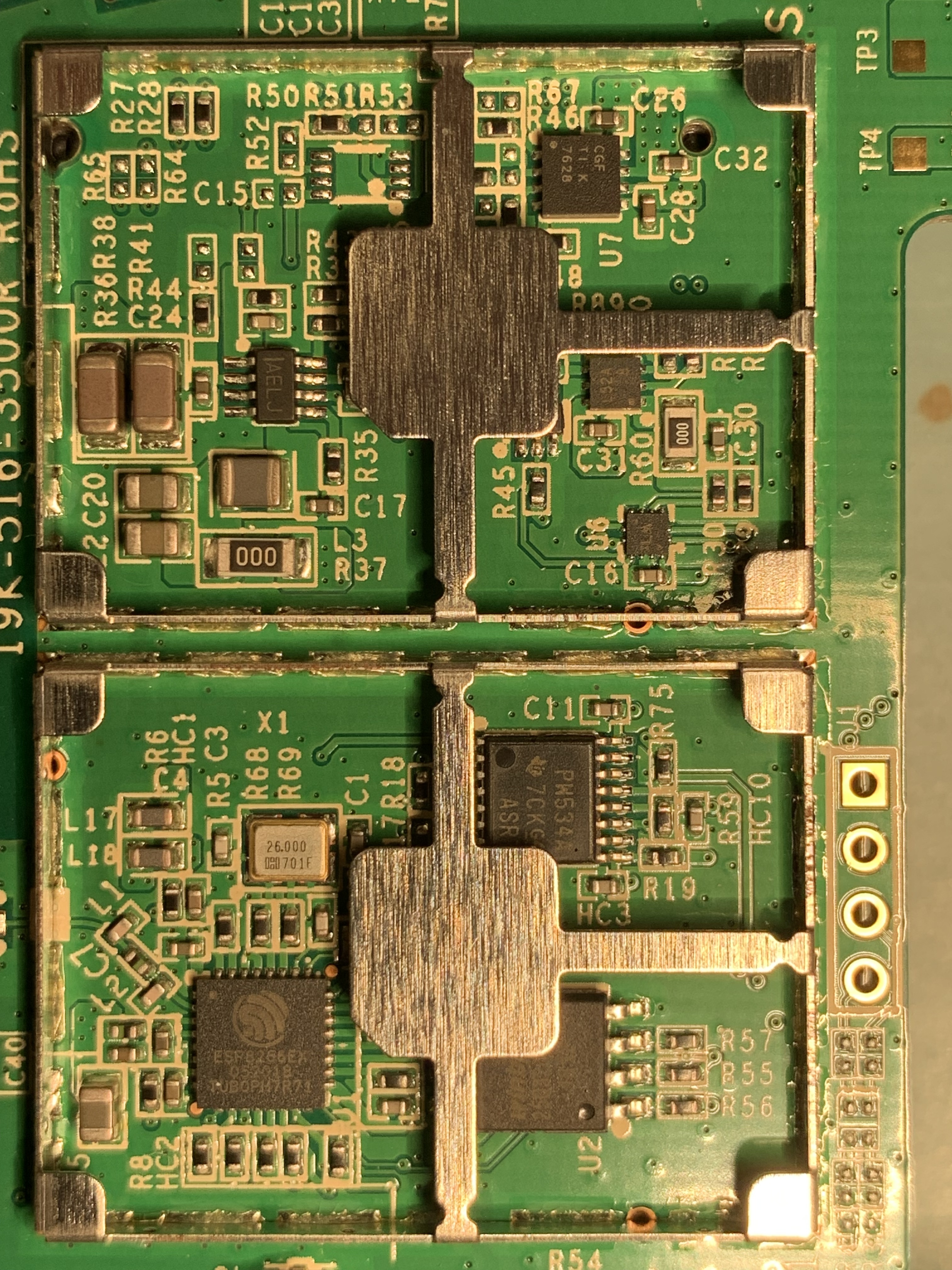
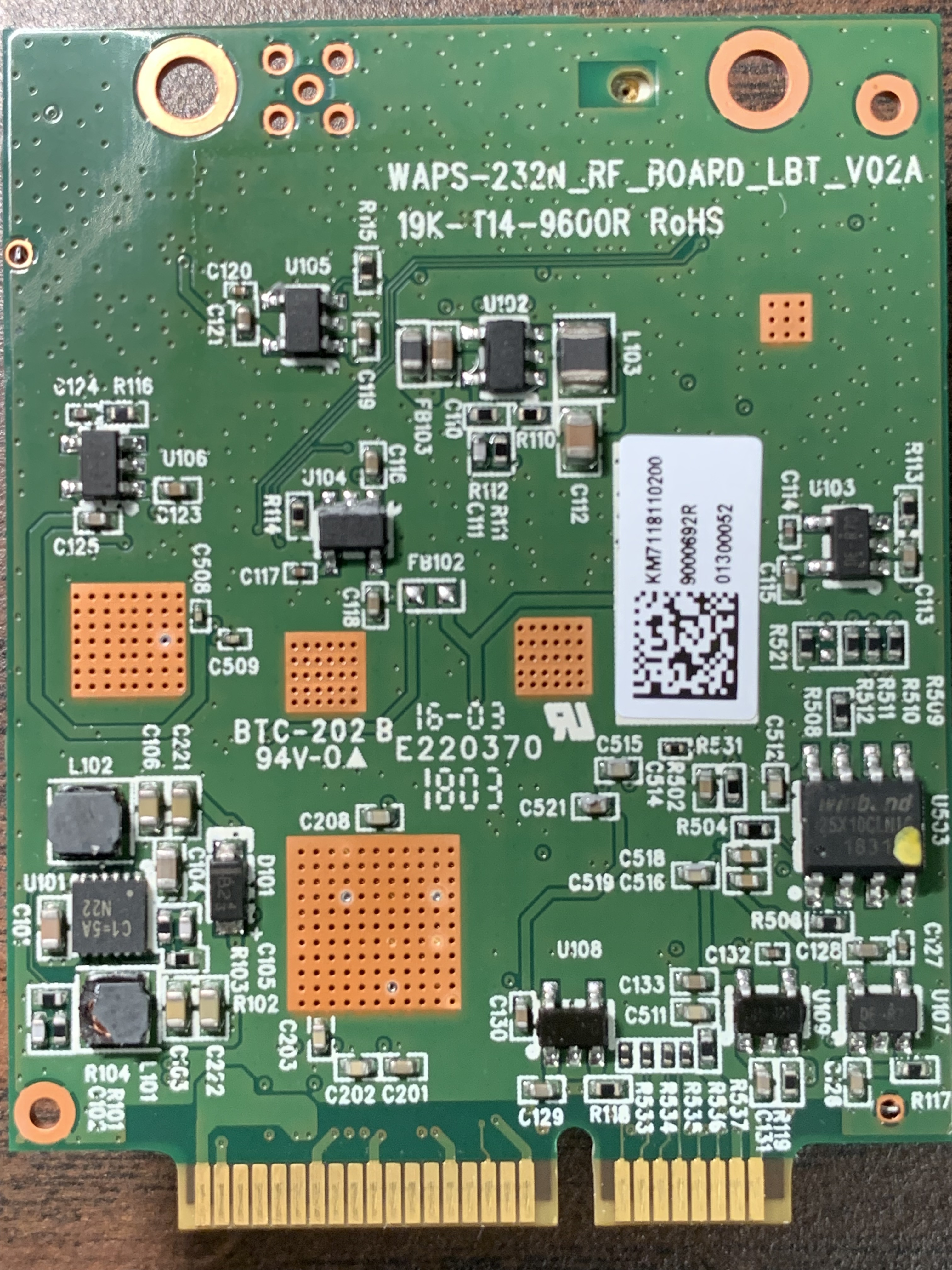
“LBT” = Listen-before-talk?
The module in the FCC documents looks different. Here is the actual concentrator “under the hood” . There is an ICE40 FPGA in the TX path of radio A. 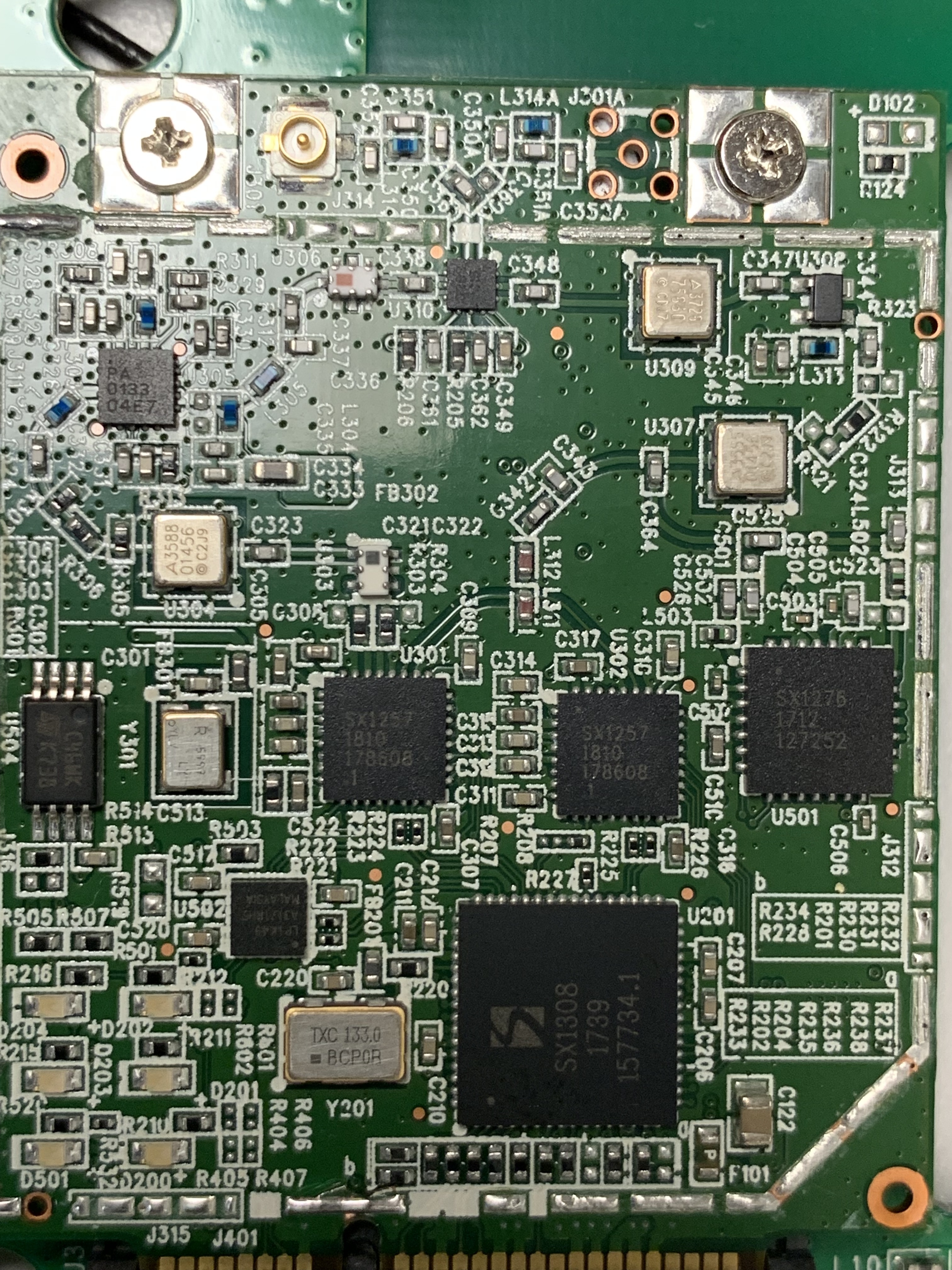
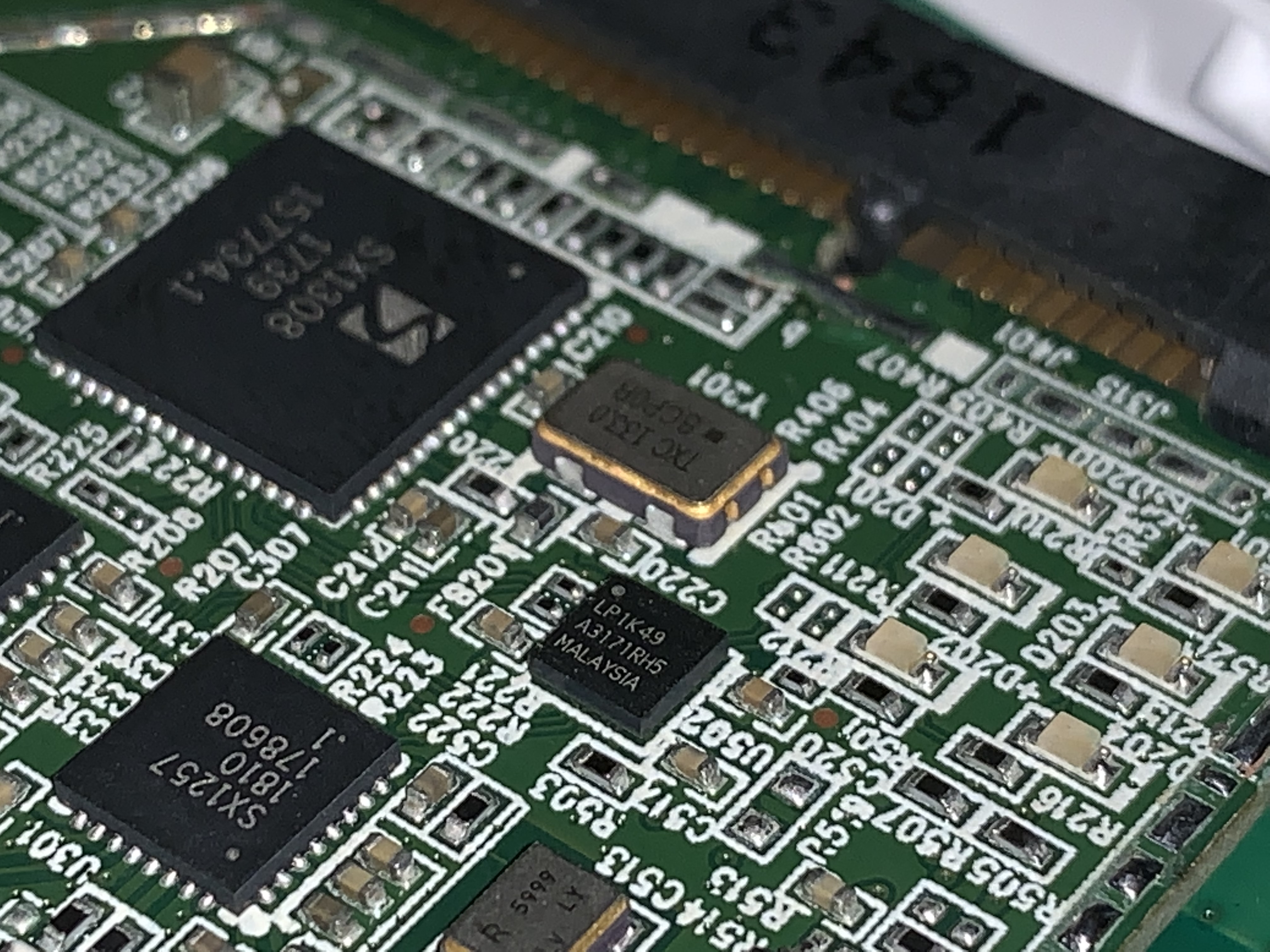
Probably yes…note the additional SX1276 - probably used for the ‘Listen’ 
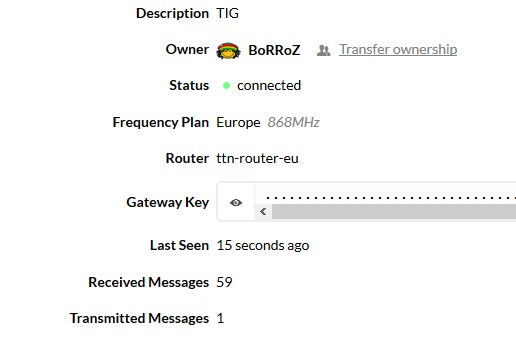
wow… smooth install  in 5 minutes
in 5 minutes
it just… works
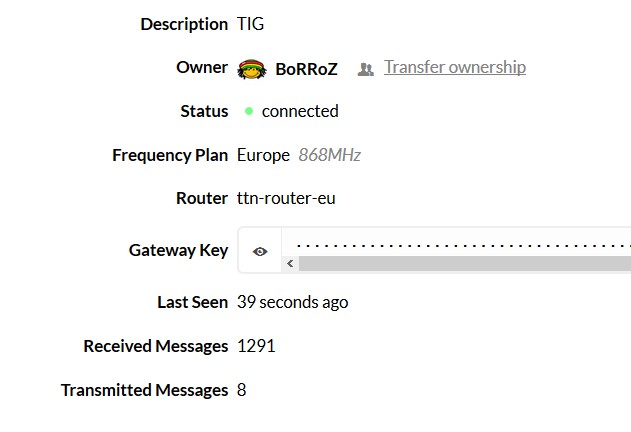
Discovered today: If the TIG is powered by USB-C and not by 230V wallplug, it keeps cool.
it doesn’t need the AC-DC part…
Yes, of course, but let’s assume that the AC/DC part is not working very efficient
I have it plugged in for half an hour… it’s not 'hot , the adapter from my internet modem and televison decoder are really hot 
I did a small survey on energy consumption of the TIG:
- powered by 230V, using TIG’s wallplug: 2,9 - 3,0 Watt
- powered by 230V, using USB-C from a 5V/3A power supply: 2,3 - 2,4 Watt
Looks like the built-in power supply heats at least 25% of the drawn energy, this is not “green technology” 
…but, okay, it’s less than 2€ cost per year 
Hi.
Maybe this have been addressed already, but I was not able to find anything.
Problem:
I have multiple gateways picking up my messages, however when I look at the metadata and see the different gateways recieveing my message I see the following:
On my mini gateway (handed out at the conference) the channel always display 0, while the other gateways that picked up the message shows the “correct” channel, see attached image.
Also, I’ve seen the minigateway show SNR of +15, while the lorix1 showed -12 (highly unlikely).
the “another lorix1” is approximately at the same distance as my minigateway to this perticular node shown in image below, both of the lorix gateways are mounted outdoors ~5-10m above ground.
Gateway settings (same for all gateways):
Europe 868 MHz
ttn-router-eu
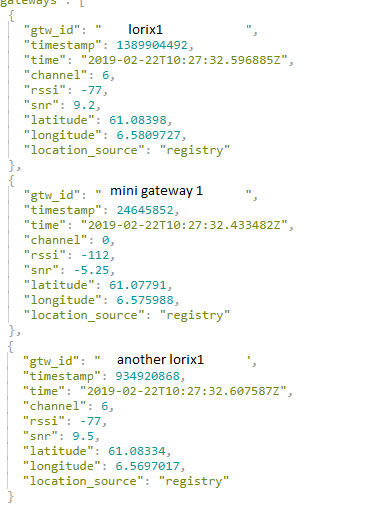
Thanks.
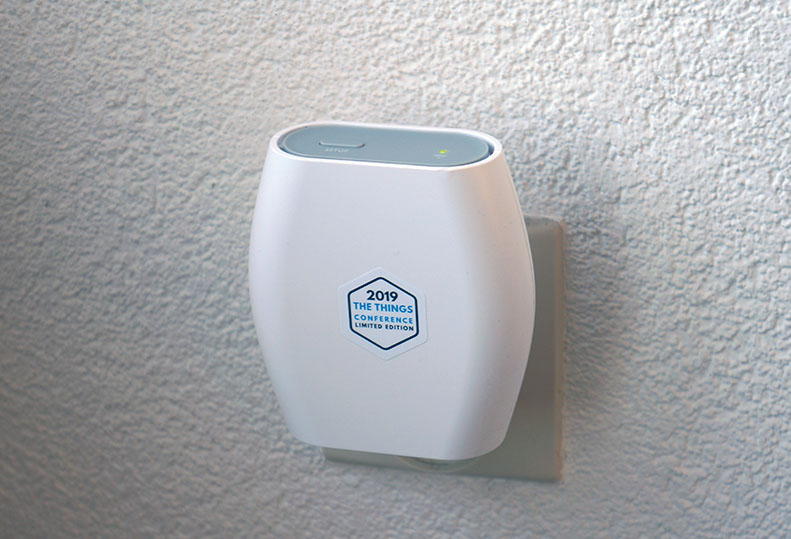
I agree, TTIG is a quality, well build device.
But this seems a little backend bug.